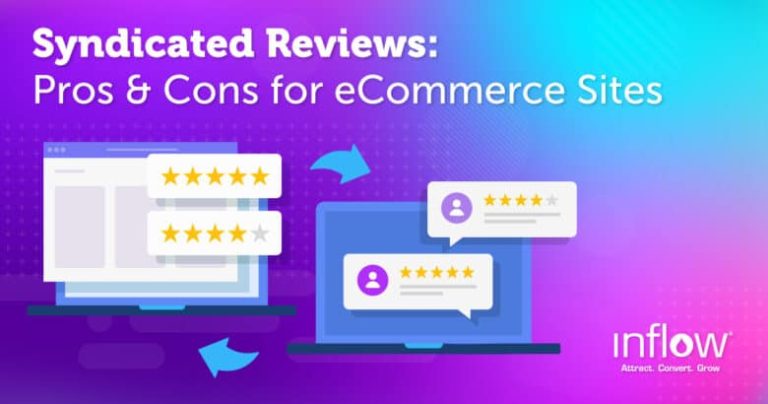Most advice aimed at businesses that want to grow assumes a few things — like a bustling economy and cash flow that you can take advantage of. However, when the economy is struggling, you may not have favourable conditions like these at your disposal.

A weaker economy can make it more challenging to grow an ecommerce business — but it doesn’t make it impossible. With the right strategy, you can find new customers and increase sales, despite market downturns. These five approaches will help you build up your company, even when the economy might be slowing down.
1. Strengthen Your Brand
During an economic downturn, customers often look for stability. A healthy, robust company image can be a real beacon for these customers.
You can intentionally cultivate a sense of community and reliability in your advertising and branding. Ad campaigns that appeal to normalcy are often more effective when things are looking uncertain.
Working with influencers — especially smaller-audience influencers who often have close ties to a local scene, subculture or community — can help you build these kinds of campaigns.
2. Reevaluate Your Marketing Spend
During a recession, leading ecommerce businesses are typically reluctant to cut their marketing budget. This money keeps your business in the public eye, and even if you are short on cash, it’s a smart idea to maintain spending.
Still, the moment is an opportune time to review ad spend and reevaluate your marketing strategy. If you can find ways to make your ad spend more effective, you can reach more customers without needing to lay out more cash.
A review of existing ad campaigns can help you determine what’s working and what isn’t. For example, in using metrics like return on advertising spend, you may find specific, reliable audience segments are no longer buying, while others have become much more consistent spenders. Pivoting existing advertising to target customers who are still shopping with your brand can help ensure your marketing expenses aren’t going to waste.
Tweaks to existing digital marketing strategies and brand materials can also make a big difference. For example, if you find your bounce rate is higher than usual, rebuilding your ecommerce website with web design and ecommerce SEO migration best practices can help you retain more of your existing customers, whilst reaching new ones.
Some businesses go even further during tough times and increase their advertising budget. This is a riskier strategy, but it can pay off if it is highly targeted to customer segments who are still spending.
3. Outsource Business Services
Doing everything in-house gives you a lot of control over every aspect of your e-commerce business. It’s also seriously time-consuming — and expensive, if you’re keeping employees on payroll to help you out.
You can outsource business services like package management and advertising development. Working with outside companies can help your business reduce costs. You won’t have to pay full-time workers with niche knowledge or equipment. Instead, you can only pay for what your business needs.
Outsourcing can also provide your business with access to specialised equipment that you can afford to rent, but wouldn’t have been able to purchase outright. For example, if you want to outsource packaging operations, a third-party company can get you access to shrinkwrapping equipment, unique packaging materials and some extra quality assurance.
4. Track Cash Flow
The bottom line is always a crucial consideration. When cash flow slows down, however, closely tracking income becomes much more valuable.
Dedicate some time to reviewing your sources of income and expenses. Often, you’ll find money dedicated to services that aren’t essential right now. If you combine your marketing data with cash flow information, you can also develop a better sense of which customers are sticking with your business.
If possible, try to do this regularly. Unexpected costs or income shortages can crop up, catching even the most careful entrepreneur off guard — if they’re not keeping track of revenue and expenses.
5. Don’t Leave Existing Customers Behind
When growing a business — especially in uncertain times — it’s easy to focus on new customers at the expense of existing ones.

Repeat customers, however, are the bread and butter for any ecommerce business. Often, they make up the bulk of a company’s income. According to survey data from BIA/Kelsey and Manta, 61% of small and medium businesses say that more than half of their revenue comes from repeat customers. Returning clients can also be easier to target and market to than new customers. They already know your brand, and you likely already have a lot of data on them — like contact info, preferences and interests.
If you want to keep growing, remember to continue engaging existing customers who have shopped with your company multiple times before. Building strong relationships with these customers can help establish a robust revenue base for your business.
Preparing Your Business for a Return to Normal
A struggling economy can slow down your e-commerce company’s ability to grow — but it’s far from a death sentence. With clever advertising and branding, plus smart money management, you can keep your business on track for growth.
Also, remember that economic downturns don’t last forever. Once your business is in a stable place, you should start to consider how you’ll handle recovery. The sudden influx of demand and new customers during the return to normal can sometimes swamp under-prepared businesses.





